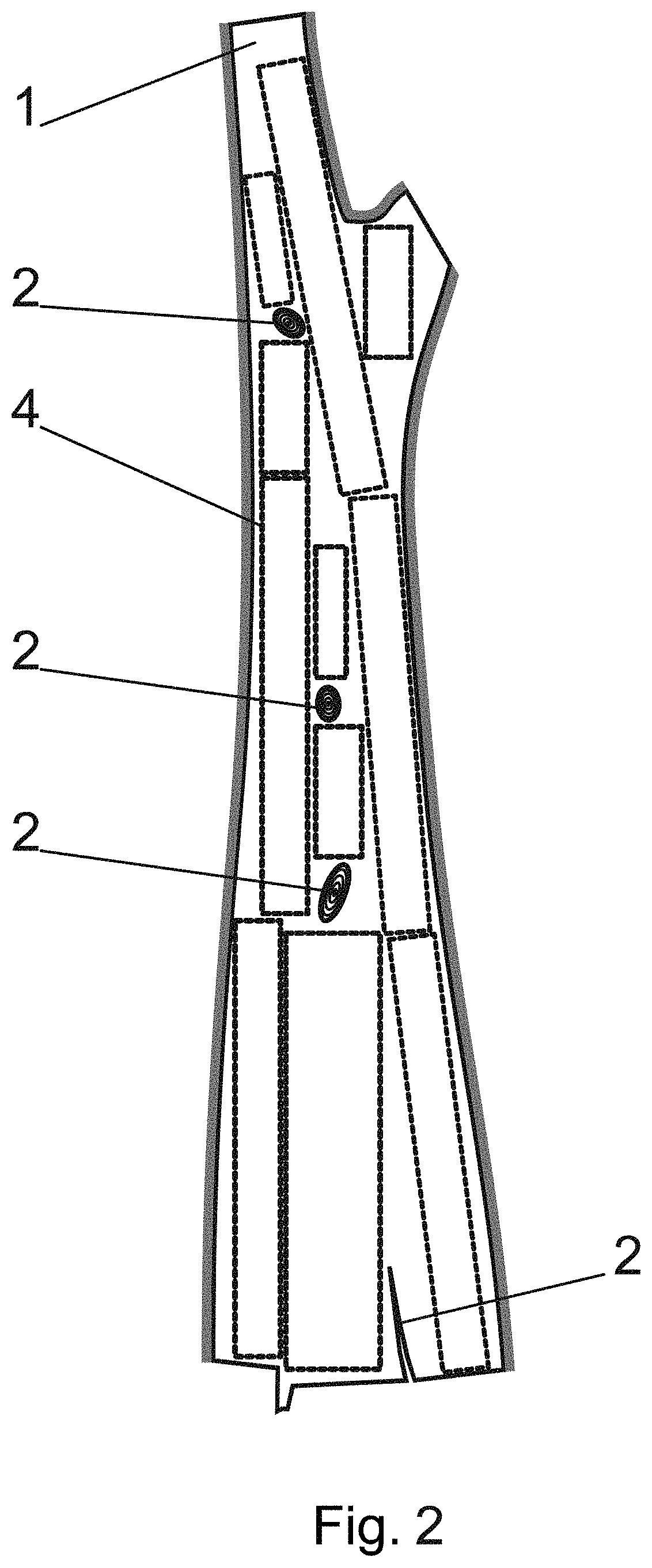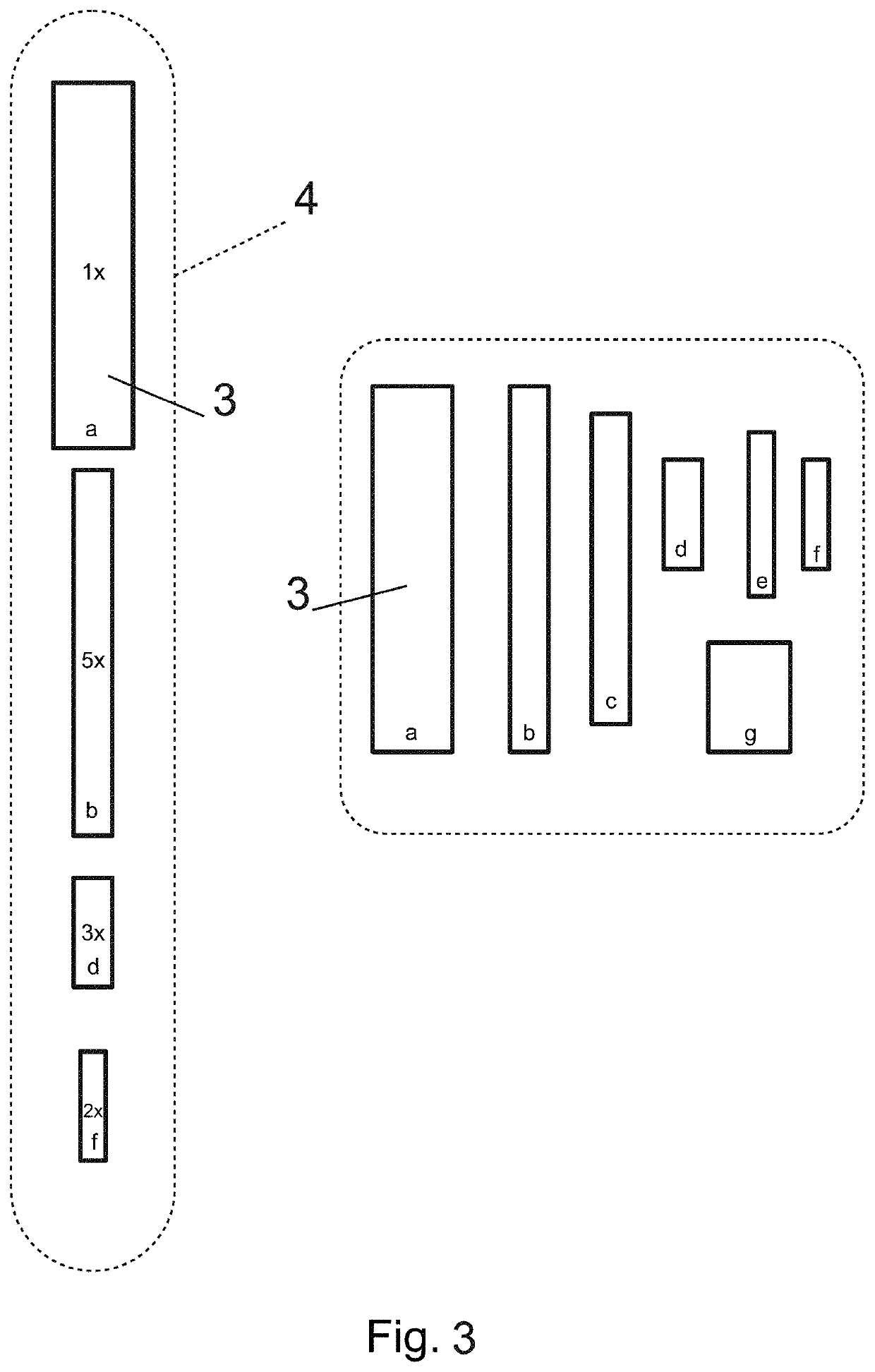Method of optimization of cutting of flat products made of natural material, mainly of wood, and system for its realization
a technology of natural material and flat product, applied in the direction of computer control, program control, instruments, etc., can solve the problem that the single side scanning cannot be assessed, and achieve the effect of reducing environmental burden, increasing economic yield of available natural material, and flexible method and system
- Summary
- Abstract
- Description
- Claims
- Application Information
AI Technical Summary
Benefits of technology
Problems solved by technology
Method used
Image
Examples
example 1
[0040]In this example according to FIGS. 2 and 3 is a method and system used at wood processing enterprise. The debranched trunks of the hardwood trees are cut to planks with the width which corresponds to the width of the products of one set of the desired shapes and dimensions of the products 3.
[0041]In this example the debranched trunk of the tree is after the basic peeling off of the bark cut by a set of the circular saws to the width 25 mm. This creates the plates on the surface of which there are defects 2 such as knots, cracks or zones with mechanical or biological damage. These defects 2 can be recognized on the basis of the optical analysis.
[0042]The scanner 5 is placed above the working table of the cutting machine 6. The working table moves in two directions; during scanning the working table moves in one direction and the plank placed on the working table runs under the scanner 5.
[0043]When scanning the surface of the visible side of the plank the gathered image is analy...
example 2
[0047]System in this example according to FIGS. 4 and 5 is concerned by the classification of the defects 2 in such a way that the acceptable defects 2 can appear on the resulting final products 3. On the scanner's 5 output there is a file which describes the outer boundaries of the scanned surface S and it discloses the boundaries of the recognized defects 2 alongside their classification into sets. Each defect is marked by category E_C[i] except for polygon E_P[i]; the number of categories is chosen pursuant to the nature of the material 1 and the clients' demands.
[0048]One of the sets contains unacceptable defects 2 such as cracks running through a whole width of the plank.
[0049]In this example the value of the residual material Crest is taken into account during optimalization, too.
[0050]The list of the desired products 3 has a structure with the parameters W[j], L[j], C[j] (width, length, weight coefficient) and A_E[j, x], which denotes the acceptability of the defect 2 defined...
example 3
[0057]The system in this example according to FIGS. 2 to 5 and 7 uses a CT scanner 8, too, by which the inside of the material 1 is radiologically investigated.
[0058]The material 1 runs between two suppliers which secure the regular movement of the material 1 and they produce a free space between them for the placement of the optical scanner 5 and CT scanner 8.
[0059]The scanner 5 allows for scanning of the surface from all sides; it has scanning strip with a given optics and it has cameras placed from above, from below and from sides. The complete surface of the material 1 is scanned within a single drag of the material 1. A CT scanner 8 with a shielding cover is placed behind the optical scanner 5. The X-ray runs through the material under various angles; the detectors analyze the impacting radiation and the computer creates an image in the scanned cross-section. The output from the CT scanner 8 is connected to the controlling computer 7, where the data from the optical scanning ar...
PUM
| Property | Measurement | Unit |
|---|---|---|
| width | aaaaa | aaaaa |
| dimensions | aaaaa | aaaaa |
| optical scanner | aaaaa | aaaaa |
Abstract
Description
Claims
Application Information
 Login to view more
Login to view more - R&D Engineer
- R&D Manager
- IP Professional
- Industry Leading Data Capabilities
- Powerful AI technology
- Patent DNA Extraction
Browse by: Latest US Patents, China's latest patents, Technical Efficacy Thesaurus, Application Domain, Technology Topic.
© 2024 PatSnap. All rights reserved.Legal|Privacy policy|Modern Slavery Act Transparency Statement|Sitemap



